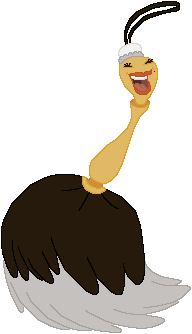
Sabellidae, or feather duster worms, are found in tropical and temperate waters worldwide, in depths of 7-165 feet, among stones or built on rock crevices. Some adaptations include: body building, multi-tasking, tubes within tubes, regenerating and reproducing.
The feather duster worm has no backbone. Its three body sections of head, thorax and abdomen reside in a flexible tube that the worm makes from tiny particles mixed with its own sticky mucus. The base of the tube is permanently attached to a hard surface such as rock or dead coral. Once anchored in place, the worm builds up its home by depositing thin strands of the mixture along the lip or collar of the tube. The internal organs occupy the center of the tube, surrounded by a layer of fluids and then a layer of muscle. The muscle layer flexes against the fluid layer to control the worm's movement.
- The feather duster part of the worm sifts the passing water for food and building material. This is called "suspension feeding." The versatile tentacles, called radioles, sit in two half-circles. As they sway, they catch particles of microscopic plankton, other edible organic matter and sediment, fine sand or calcium carbonate (chalk) for the tube layers. Grooves in the tentacles pass the particles down to the mouth. The tentacles also function as gills by collecting oxygen. Its organs resemble tubes more than individual organs. Food passes through a straight digestive tube. The unique blood system vessels contract so that blood ebbs and flows like tides rather than the typical one-way veins of animals. They can regenerate if bitten off or broken by predators, which include fish, other types of worms, starfish, jellyfish, shrimp and crabs. Feather duster worms are either male or female. Females release eggs into the water and males release sperm to fertilize them. Among the first animals to evolve, feather duster-type worms retain their numbers today. They are secure in their habitats and have a following from salt-water aquarium enthusiasts.

 I chose the feather duster worm because it's cute and interesting. Plus, I immediately thought of the character picture above from Beauty and the Beast. :)
I chose the feather duster worm because it's cute and interesting. Plus, I immediately thought of the character picture above from Beauty and the Beast. :)

No comments:
Post a Comment